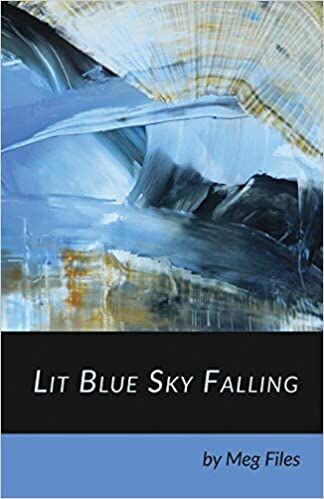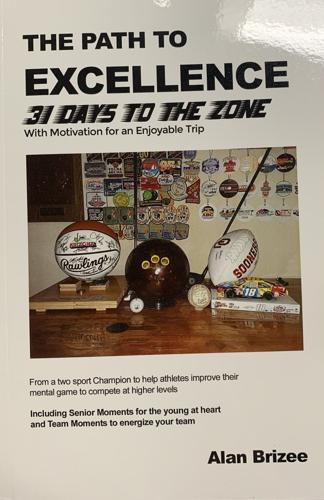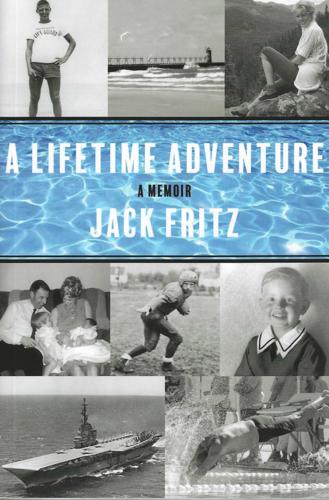“J. Blanton Belk: It’s an Unfinished World, and It’s still in the Making…” By J. Blanton Belk. Pediment Publishing. $36 hardcover.
Well, it’s true; you can’t always tell a book by its cover. If you didn’t recognize his name (this reader did not), you could imagine the grinning, CEO-looking guy pictured on the dust jacket of this book would be just another business type. … Not the man with the vision that sending hundreds of smiling, dancing, singing young people out into the world might bring about international peace and unity. This memoir by Tucson nonagenarian J. Blanton Belk chronicles his life and career as CEO of Up With People.
A Southerner, the son of a Presbyterian minister and grandson of a plantation owner, Belk writes that he had an epiphany about his role in the segregated South in 1944, when he got leave from the Navy to attend his grandfather’s funeral. His grandfather had been an influential figure in his South Carolina county, and many folks turned out to honor him. They included 40 or 50 African-Americans. But “they could not come into the cemetery,” he realized, with a shock. That experience inspired Belk to become involved in the civil rights movement, the international Moral Re-Armament movement, and eventually to help found Up With People, designed as an alternative to 1960’s youthful angry voices and destructive behavior.
With African-American buddy Charles Howard, Belk would meet Martin Luther King and Jesse Owens. Later, as Up With People grew, Belk met U.S. presidents, two popes, an astronaut, European monarchs and heads of state, and scores of titans of industry. His memoir provides an interesting account of Up With People, its Tucson roots, and of his life.
— Christine Wald-Hopkins
“Lit Blue Sky Falling” By Meg Files. Finishing Line Press. $14.99.
“Don’t/ write about dead dogs or new babies/ I tell my students. Or for god’s sake/ rainbows…,” writes Meg Files, in a luminous and thoughtful, but also etched and wry, poem that includes — among other things — a rainbow and a new baby. “It’s all been said by better/ than you, also by worse.”
This chapbook, by poet, novelist, and former Pima College English and Journalism Department Chair Files, could serve as a master class in “[saying] it better than you.” That, and a master class in the seamless intertwining of the personal with natural, mythological and philosophical realms.
Family rests at the heart of the collection — twin sisters, parents, a son, a granddaughter — but as vague presences, not limned characters; private, protected beings who share with the poet loss, grief, wonder, awe.
The volume is framed by excursions Files took with her sisters — opening with a trip to the Galapagos; closing, with one to Iceland. Her poetry is conversational, visual, precise, cool, often dry, as you can hear in this Galapagos poem about blue-footed boobies: “…the man/ in the i love boobies tee-shirt cries out/ — there on the trail is the display of a fallen/ chick…./ Observe survival of the fittest.”
“Seeing,” observing, accepting the natural order of life are themes in the poems. Recurring images of the poet’s mother, lost to a hereditary disease that threatens her offspring; her father’s aging and death, even the obituary of a former, abusive husband serve as subjects she addresses with delicate restraint.
There is solace to be found in the Iceland poems, a visit to the land of their ancestors on the heels of their father’s death: harsh, exquisite natural beauty; a connection to the jettisoned old gods. Poetry and poets honored.
“After/ a death, signs appear,” Files writes, “… — the Northern Lights, these tiny purple/ flowers on the lava rock by the waterfall, this small/ shaggy horse. We are Haraldsdóttir, returned home.”
Lovely.
— Christine Wald-Hopkins
“The Path to Excellence: 31 Days to the Zone” By Alan Brizee. Dorrance Publishing Company. $14 paperback; $9 e-book.
Tucsonan Alan Brizee drew on decades of bowling and golf competition to write this workbook on improving athletes’ mental acuity — thus improving their competitive acuity — in a sequential, month-long regimen. Central to the book is the theory that excellence in competition requires mental discipline. Said discipline can be attained by proper preparation, Brizee writes, the ability to adjust, practiced concentration, pre- and post-”shot” routines, and pre-match and post-match analyses. He lays out each day with a concept, real-life experiences to support that concept, reader’s response to it, and plenty of motivational enthusiasm. His objective is to help reader-athletes learn to get into the “zone” and achieve excellence in whatever their sport.
— Christine Wald-Hopkins “Famine Foods: Plants We Eat to Survive” By Paul E. Minnis. University of Arizona Press. $29.95; $16.17 Kindle.
“A starving man does not sniff his food.” Paul E. Minnis, professor emeritus of Anthropology at the University of Oklahoma, prefaces this volume with an old Ukrainian adage that prepares the reader for an extensive survey of comestibles you hope you’ll never have to eat — but that you probably should be aware of all the same. As Minnis ably demonstrates, the threat of starvation is as close as the next political upheaval, severe water shortage, or climate catastrophe.
From the perspective of ethnobotany, Minnis discusses the circumstances in which famine foods been utilized from ancient times forward to the modern day, then moves on to the varieties and characteristics of such fare as employed by different cultures. In some instances, survival food is simply less favored sustenance already in a society’s diet. But other examples sound distinctly unpalatable: foods of last resort may include leaves, seeds, roots, the inner bark of trees, flour extended with chalk, and even ornamental tulip bulbs, such as were consumed by the Dutch during the Hongerwinter (Hunger Winter) at the close of World War II.
The study of famine food is “an obscure and under-appreciated niche of food scholarship” according to Minnis, although it is vital information that should be valued and preserved. The life-sustaining nourishment he discusses has been crucial to the survival of millions during extreme food shortages.
Adventuresome gourmets should not be tempted to sample these foods, because they come with a caveat — some of them can be toxic without proper handling and preparation. This is not a how-to book, Minnis cautions. Nor is it light reading. The author is a scholar, first and foremost, and this is a copiously referenced, footnoted, and data-driven scholarly volume. Minnis, who now lives in Tucson, is a visiting scholar at the School of Anthropology at the University of Arizona. He conducts research on the pre-Hispanic ethnobotany and archeology of the Southwestern United States and northwest Mexico.
— Helene Woodhams “The Transformation of Chastity James” By Kathleen Morris. Five Star Publishing. $25.95 hardcover, $25.99 large print paperback.
A woman on her own in the wild west faced enormous challenges, many of them presented by men. In this work of historical fiction, Chastity James leaves her comfortable Massachusetts home in 1878 to spend a year teaching in Dodge City, Kansas. She is unprepared for the duplicitous tactics of the men who hired her, their lewd disrespect, and the unfair treatment that is the lot of unprotected women in the ‘Queen of the Cowtowns.’ Assaulted and raped in her school house, quick-thinking Chastity kills her assailant in self-defense before he can kill her — and, for her trouble, is arrested for first-degree murder.
But with her future looking bleak, Chastity receives a visit from none other than legendary “Big Nose Kate” Haroney, inamorata of Doc Holliday and a woman who knows a thing or two about survival. Haroney provides an escape plan and advises Chastity to take charge of her own destiny — which she capably does, sometimes (not surprisingly) disguised as a man. On the run from the law, life comes at Chastity fast in a series of events that bring her to the transformative realization that she has the power to right wrongs and ensure justice her own way.
Author Kathleen Morris stirs real-life historical figures like Haroney and a bumbling Wyatt Earp into her mix of characters with good effect, and places Chastity in intriguing historic scenarios, including a traveling medicine show. For all her empowerment, Chastity doesn’t actually make it without a man — she finds the love of her life while on the run — but their exploits together make for fun reading. Morris won the Western Fictioneers Peacemaker Award for Best First Western Novel for her debut outing, “The Lily of the West.”
— Helene Woodhams “A Lifetime of Adventure: A Memoir” By Jack Fritz. Book House Publishing. $22.95; $7.19 Kindle.
Discipline, observes author Jack Fritz, is the key to achieving your life goals, whether in work, play, or love. It’s a template for living and an ethic that has served the octogenarian well in his long and productive career, his deeply devoted, nearly 60-year marriage, and his life-long passion for athletic pursuits. Born during the Depression and named, perhaps presciently, for world heavyweight champion Jack Dempsey, Fritz learned to play hard and work even harder from an early age. It’s also clear that he learned to be observant — his memoir is packed with the kind of finely-tuned details and reflection one might expect from a dedicated diarist. The result is the thoughtful record of an eventful life lived with enthusiasm, right up to and including his decision to become an Arizona snowbird: Fritz currently divides his time between SaddleBrooke and his home in the Puget Sound area of Washington state.
— Helene Woodhams









